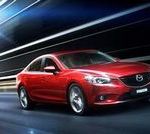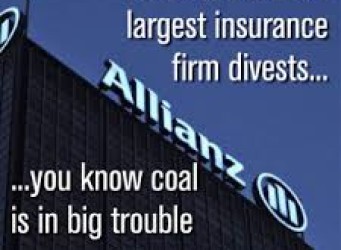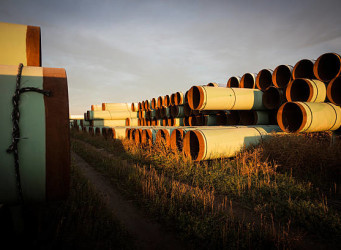On July 27, 2001 Dan Becker, the director of fuel economy standards for the Sierra Club at the time, and I went to the White House to urge the Bush Administration that the auto industry had the technology on the shelf to immediately improve MPG of the automotive fleet and that they should and could dramatically increase CAFE (Corporate Automotive Fuel Economy) standards. We told them that EVERY SINGLE TIME that the industry complained and insisted that they could not meet new standards (think catalytic converters, seat belts, air bags) without large price increases and poorer performance that would cause serious damage to the industry and consumer choice it NEVER happened once the new standards were in place. In about 2005 we were almost able to get vastly increased CAFE standards passed in the Senate with the leadership of my own Senator Durbin of Illinios. But it took the current Administration to get the job done. And, Oh My Goodness, demand for the higher mileage vehicles is strong, the manufacturers are beating the standards and doing it without price increases that are destroying demand!! This is just another example of how doing what is good for the planet is also good for the economy. And additionally, moving the country BEYOND OIL and the political challenges that addiction to oil causes. It goes to show that we have the capability to solve our problems but we must be bold and take the necessary steps to get there.
EPA exec: Industry ahead of schedule on mpg goals
Gabe Nelson

Automotive News
October 6, 2013 – 12:01 am ET
Christopher Grundler, director of the Office of Transportation and Air Quality at the EPA, was promoted last year at a pivotal time. Fuel economy has become a fiercely competitive battleground as consumers demand more efficient cars and the Obama administration’s new standards start to ramp up to a nominal average of 54.5 mpg by 2025.
Grundler, 56, oversees the beat cops who police the marketplace. In the past year they busted Hyundai and Kia for overstating the fuel economy of many of their models and pressured Ford to lower the fuel economy estimate for the C-Max hybrid, after agency testing showed the car fell well short of its promised 47 mpg.
That tough stance will continue, with ramped-up audits and rule changes when the EPA sniffs out foul play, Grundler says. The agency has reassigned more than 30 staffers to compliance and enforcement to keep an eye on the industry.
Grundler spoke Sept. 25 at his office in Washington with Staff Reporter Gabe Nelson.
Q: Are the automakers on track with the new fuel economy standards?
A: What is striking to us is how well the industry is doing. They are beating the standards, and they are well ahead of schedule. Our estimate for the 2013 model year, when all the sales numbers come in, is that 27 percent of the new-car fleet will be in compliance with the 2016 greenhouse gas and fuel economy standards.
How has that happened?
There are two takeaways. One is that the industry is penetrating the fleet with these new technologies faster than they need to. And the consumers are buying more fuel efficiency than the standards require.
Are certain types of cars responsible for that?
It’s really across the board. There are something like 90 models that are beating the 2016 standards. It’s across segments, and it’s dominated by what we predicted: better gasoline engines, better transmissions. What’s really interesting to us is when there’s a redesign of a model, the change in fuel economy performance is pretty remarkable.
The 2014 Malibu redesign is beating its 2016 target. It improved fuel economy by 12 percent, the price increase was only $160, and they just did this with a new six-speed transmission, a start-stop system and other improvements. And that was just one redesign. The 2014 Mazda6 is beating its 2019 target. The new Altima is beating its 2018 target. These are mainstream, large-volume vehicles that are going to generate credits for these automakers.
Speaking of credits, are you seeing any automakers sell them to competitors?

For the first time, automakers are trading among themselves. We’ve never seen this. They’ve had the ability to do this in our Clean Air Act programs before … but they’ve never taken advantage of it. This is the first time — in this greenhouse gas world — that they are. We’ll be putting out a report on that this fall.
From regulatory filings, we’re seeing companies such as Tesla make money by selling and trading credits like yours. Is that a good thing?
I think so. That’s certainly part of the design, to allow the standards to be integrated with how firms plan their production, so that they don’t have stranded investment in a model. It just eases their planning cycles. And it rewards early movers as well.
What are you doing to prevent situations like the one that led Ford to re-label the C-Max hybrid?
We’re paying a lot of attention to this stuff, because the stakes are so high. It’s a high priority for EPA that the benefits of our standards are achieved, and we protect the enormous investment that firms are making to achieve them. So we’re moving more resources into compliance and certification, and we’re going to be scrutinizing these issues, including how vehicles are grouped.
What types of resources are you moving into compliance?
We made the difficult decision to shut down our own automotive technology development program. We had something like 33 people working in that part of EPA … but because of the paramount priority to execute the [fuel economy] standards in an effective way, we made the decision to deploy those resources in this area. They’re adding capacity to our testing operation, as well as to our compliance division. They’ll also be a very important part of the midterm evaluation [of the fuel economy standards], which is another very high priority for EPA as well as the automakers.
What was that division best known for?
Their signature and best-known achievement was the invention and commercial deployment of hydraulic hybrid technology. We’re seeing this now on the road in a number of applications, most prominently in refuse trucks.
We’re still a long way away from the 2017 midterm review of the fuel economy standards. What have you done so far?
It’s a long way away, but we’re not waiting. We’ve already started that work. We’re partnering with the Energy Department, we’re partnering with NHTSA and the state of California. Even Environment Canada is participating. I already made visits this summer to the automakers as well as Tier 1 suppliers in Germany to have deep-dive technical discussions about what they’re doing and what they’re seeing. This fall I’m visiting each of the major Detroit automakers to do the same thing. And depending on whether or not the government has a budget, I’ll be visiting the Asian manufacturers as well. This is going to be a very transparent process.
Mercedes-Benz is claiming that a new refrigerant, 1234yf, can ignite in a crash and spew poison gas. But an SAE committee concluded it is safe. EPA offers credits for its use, calling it a more eco-friendly choice. Do you stand by it?
We’re not requiring the use of any particular type of refrigerant, so this is really a market choice. We’ve got a long history of working with SAE and these committees, and we have complete faith in how they do their work.
You defer to SAE’s conclusion?
Yeah. And we’re the agency that has already approved 1234yf and did so with a number of use conditions. We’re standing by that work.
Are you close to finishing the “Tier 3” rules for tailpipe emissions and gasoline?
Tier 3 is our highest regulatory priority because of the enormous public benefits that will provide from Day One due to the cleaner gasoline standards. On Jan. 1, 2017, we’ll see immediate performance improvements across the entire fleet.
How closely will that align federal and California tailpipe emissions rules?
The whole Tier 3 program has been engineered to harmonize with the California program. There will be very little differences. There are some important decisions that the administrator will need to make to finalize that — and we certainly are paying very close attention to the comments that we’ve heard from the automakers about where there are remaining differences, based on the proposal.
Will they bring the United States closer in line with Europe?
Those differences remain, and those differences are significant.
Could the current round of free-trade talks change that?
Those trade talks are a very high priority for the administration, and we’re participating in them … but it no doubt will be challenging. Certainly, on the emissions side — which is what I know, not the safety side — there are very big differences between us and the European Union. They have a completely different certification process. … They have a completely different set of test cycles, which, by the way, they’re in the midst of completely changing. … But the goal, when you’re dealing with a global business — not just cars, but trucks — of achieving more consistency is a very important goal. There are real costs that can be saved. No doubt about it.
You can reach Gabe Nelson at gnelson@crain.com.
Read more: http://www.autonews.com/article/20131006/OEM11/310079968/epa-exec:-industry-ahead-of-schedule-on-mpg-goals#ixzz2kXOvIE5W
Follow us: @Automotive_News on Twitter | AutoNews on Facebook



